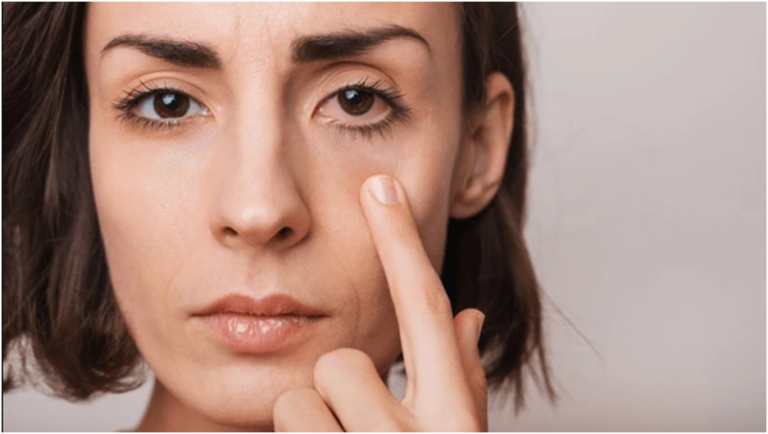Dry eyes, a prevalent ailment marked by insufficient or low-quality tears, may result in discomfort, irritability, and blurred vision. The prevalence of dry eyes is rising; up to 30% of persons are thought to be affected. While there isn’t a cure for dry eyes, you may improve your overall eye health and lessen symptoms by implementing a few doable preventive measures.
Table of Contents
Understanding Dry Eyes
Tears are necessary for the eyes to be lubricated and healthy. They assist in maintaining the cornea, the transparent front surface of the eye, smooth and clear in addition to shielding the eyes from dust, debris, and dangerous microbes. When tears are either insufficient in amount or of low quality, dry eyes result. This may result in a variety of symptoms, such as:
- Burning sensation in the eyes
- Gritty or sandy feeling in the eyes
- Stringy or mucus-like discharge from the eyes
- Redness and irritation of the eyes
- Difficulty seeing, especially in bright light or for extended periods
How to Preventing Dry Eyes
Dry eyes can be caused by a number of things, such as autoimmune illnesses, aging, certain drugs, and environmental factors. You may lower your risk of developing dry eyes and relieve symptoms by making a few lifestyle changes and taking preventive actions, even though certain causes are beyond your control.
1. Maintain Proper Eyelid Hygiene
Eyelid hygiene is crucial for preventing dry eyes. Blepharitis, a common inflammatory condition of the eyelids, can clog the meibomian glands, which are responsible for producing the oily layer of the tear film. This can lead to an evaporative dry eye. Regular eyelid hygiene can help prevent blepharitis and keep the meibomian glands functioning properly.
- Cleanse your eyelids: Gently wash your eyelids with mild soap or baby shampoo and warm water. Avoid rubbing or scrubbing your eyelids.
- Apply warm compresses: Warm compresses can help melt oils in the meibomian glands and promote their release. Apply a warm compress to your closed eyelids for 5-10 minutes, 2-4 times a day.
2. Use Artificial Tears
Artificial tears are the best eye care products for dry eyes, they can provide lubrication and relief for dry eyes. Choose preservative-free artificial tears if you use them frequently. Apply artificial tears as often as needed, especially after prolonged periods of screen time or in dry environments.
3. Avoid Irritants
Certain environmental factors can irritate the eyes and worsen dry eye symptoms. These include:
- Dry air: Use a humidifier in your home, especially during the winter months.
- Smoke and fumes: Avoid smoking and secondhand smoke.
- Wind: Wear protective eyewear when spending time outdoors.
- Dust and pollen: Keep your windows closed during pollen season and wear protective eyewear when outdoors.
4. Blink Frequently
Blinking is essential for distributing tears across the surface of the eye. When you focus on a screen or task, your blink rate decreases, leading to tear evaporation and dry eyes. Make a conscious effort to blink frequently, especially when using digital devices.
5. Maintain a Healthy Diet
A diet rich in omega-3 fatty acids can help improve tear quality. Omega-3s can reduce inflammation and promote the production of meibum, the oily component of tears. Include fatty fish like salmon, tuna, and sardines in your diet, or consider taking omega-3 supplements.
6. Manage Underlying Conditions
If you have an underlying medical condition that contributes to dry eyes, such as an autoimmune disease or thyroid disorder, manage the condition effectively to reduce dry eye symptoms.
7. Schedule Regular Eye Exams
Getting regular eye exams from an optometrist or ophthalmologist can help identify dry eyes and other eye conditions in their early stages. Early detection and intervention can stop more eye injuries and enhance general eye health.
8. Consider using an eye cream
Eye cream can provide additional hydration and nourishment to the delicate skin around the eyes. Look for an eye cream that contains ingredients like hyaluronic acid, ceramides, and omega-3 fatty acids.
Take Screen Breaks and Adjust the Lighting
Extended screen time is a common contributor to dry eye symptoms due to reduced blinking rates and increased exposure to blue light. To mitigate these effects, it’s important to take regular breaks using the 20-20-20 rule: every 20 minutes, look at something 20 feet away for at least 20 seconds. Additionally, adjust the lighting around your workspace to reduce glare on screens. Consider using screen filters or adjusting the brightness and contrast settings on your devices to minimize eye strain.
Stay Hydrated and Exercise Regularly
Sustaining optimal tear production requires adequate hydration. Make sure you drink plenty of water to be properly hydrated throughout the day, including for your eyes. Regular exercise also promotes better circulation, which is beneficial to eye health. Exercises like cycling, yoga, and walking can help regulate blood flow and provide your eyes with the nourishment and oxygen they need to stay healthy.
Conclusion
Although dry eyes can be an annoying and frustrating disease, you can improve your general eye health and lessen symptoms by making the right lifestyle changes and preventive actions. You may take responsibility for your eye health and appreciate the gift of comfortable, clear vision by paying attention to the advice provided in this extensive book.

